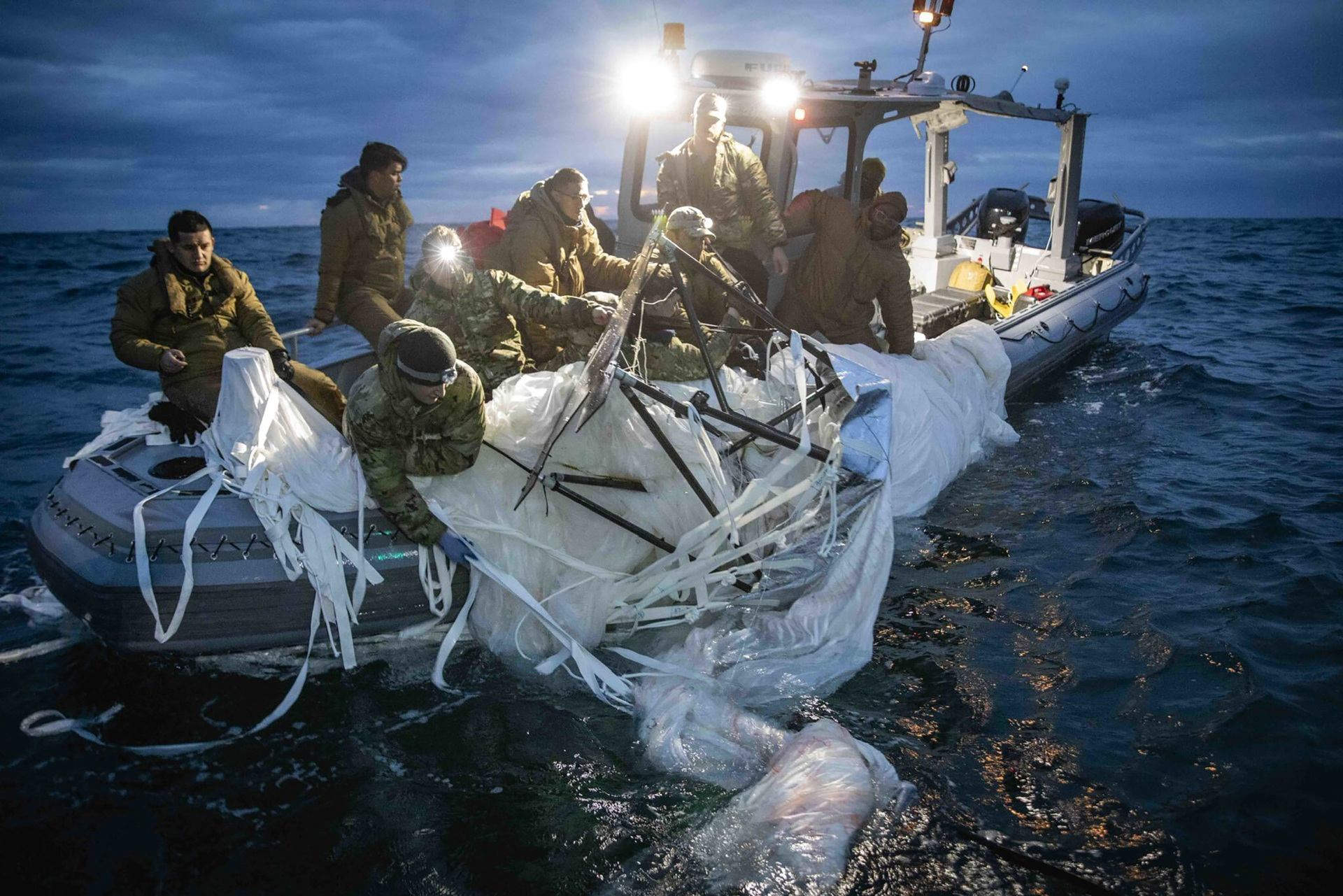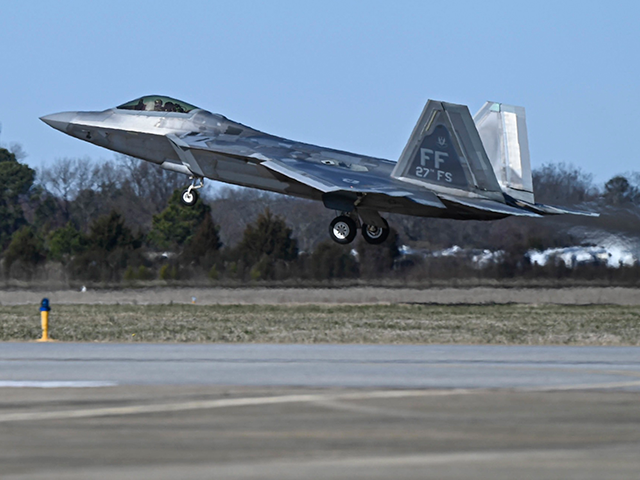Canadian Defense Minister Anita Anand said on Monday that planes from the Royal Canadian Air Force (RCAF) are flying over the Yukon, searching for debris from the unidentified flying object (UFO) shot down by an American jet fighter on Saturday.
Anand said there was “no guarantee” the wreckage would be recovered, since it is “located in a remote location northeast of Dawson City, in complex alpine terrain that is prone to changing northern weather conditions.”
“The terrain is extremely rugged. It is extremely remote. The temperature is approximately -25 Celsius there, and there is heavy snow,” Anand said from Brussels, Belgium, where she is meeting with NATO defense ministers.
Anand said the search for debris included at least five aircraft: a CC-130H Hercules, a CH-148 Cyclone, a CH-149 Cormorant, and two CC-138 Twin Otters. The Hercules is a large aircraft that can be configured for a variety of roles, while the Twin Otter is a relatively small plane noted for performing well in search and rescue missions in Canada’s cold northern climate. The Cyclone and Cormorant are helicopters.
“We have RCMP (Royal Canadian Mounted Police), we have FBI assistance, and we have obviously Canadian Armed Forces members that are assisting with this effort,” she said.
CBC News quoted leftist Canadian Prime Minister Justin Trudeau saying on Sunday he “made the decision to shoot down the object” because it was “a threat to civil aviation and a potential threat to Canadians.”
Trudeau said on Monday the search area for debris in the Yukon shootdown covered about 230 kilometers of “fairly unpopulated and sparsely populated territory,” stretching between Dawson City and Mayo. He said the search teams included personnel experienced in dealing with hazardous materials.
A senior Canadian government official told CBC News the object was detected while it was traveling through Alaska on Friday night. An American F-22 fighter was the first warplane to reach the object after the decision was made to shoot it down, launching the missile that destroyed the UFO at 3:41 p.m. Eastern time.
“To the best of our knowledge, this was the first time that a NORAD operation has downed an aerial object,” Anand said on Saturday.

FILE – In this photo provided by the U.S. Navy, sailors assigned to Explosive Ordnance Disposal Group 2 recover a high-altitude surveillance balloon off the coast of Myrtle Beach, S.C., Feb. 5, 2023. A missile fired on Feb. 5 by a U.S. F-22 off the Carolina coast ended the days-long flight of what the Biden administration says was a surveillance operation that took the Chinese balloon near U.S. military sites. It was an unprecedented incursion across U.S. territory for recent decades, and raised concerns among Americans about a possible escalation in spying and other challenges from rival China. (U.S. Navy via AP)
U.S. Army Gen. Mark A. Milley, chairman of the Joint Chiefs of Staff, said at a news conference on Tuesday that the other two objects intercepted last weekend came down in the Arctic Circle and Lake Huron, respectively.
“We’ll get them eventually, but it’s going to take some time to recover those,” he said, hinting the Yukon search was likely to produce tangible results first.
Anand said on Tuesday she was “reluctant” to endorse Trudeau’s suspicion that the objects intercepted in U.S. and Canadian airspace, including the notorious Chinese spy balloon from last week, were linked by “some sort of pattern.”
“It is very early. We have not yet recovered the debris. We have not yet examined that wreckage, and I am a person that likes to deal in facts. I will wait until the facts are presented to me from an analysis of that debris before making a statement relating to a pattern,” she said.
The White House said on Monday that the three objects destroyed over the weekend were shot down “out of an abundance of caution” and may have been “balloons that were simply tied to commercial or research entities, and therefore benign.” No such entity has stepped forward to claim the objects as of Tuesday afternoon.
The U.S. Northern Command said on Tuesday that diving crews were “able to recover significant debris” from the massive Chinese spy balloon shot down on February 4, including “all of the priority sensor and electronics pieces identified, as well as large sections of the structure.”
The salvage operation off the South Carolina coast has been in progress for the past ten days. North American Aerospace Defense Command (NORAD) commander Gen. Glen VanHerck described the payload carried by the immense Chinese balloon as “a jet airliner type of size, maybe a regional jet,” with an estimated weight of over 2,000 pounds.
U.S. military officials said “large sections of the structure” have been recovered from the ocean with the aid of a crane, including about 40 feet of its antennae.

COMMENTS
Please let us know if you're having issues with commenting.